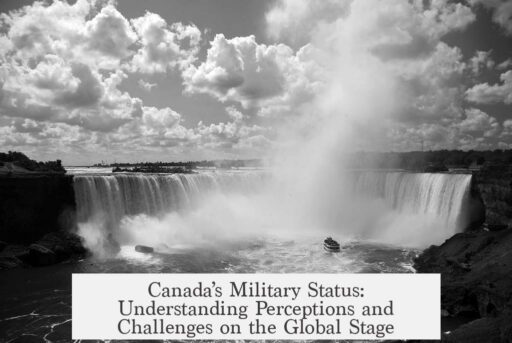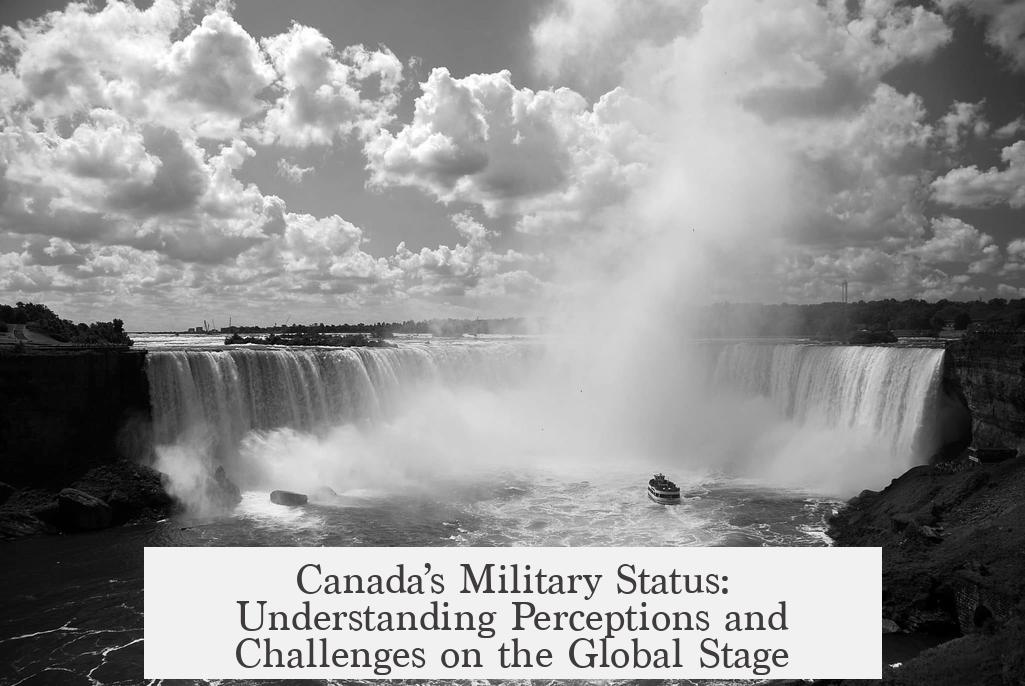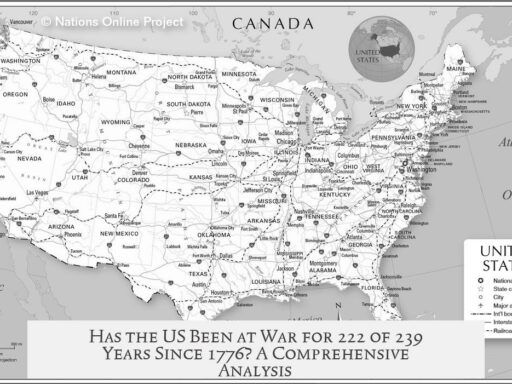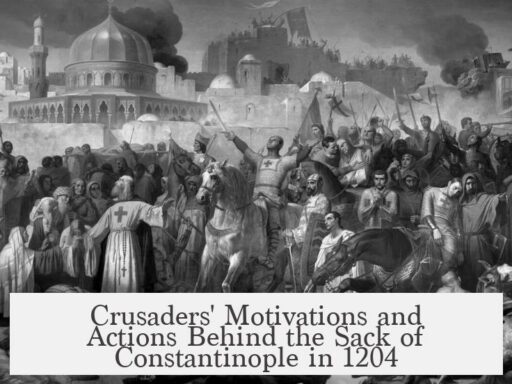Canada is not taken as seriously as a military power mainly because of its limited ability to independently project power, relatively small military size, political and procurement challenges, its specialized but narrow military focus, and its close alignment with the United States in defense matters.
Canada fields a capable and well-regarded military force, but its scale is modest compared to major powers. Its total population hovers around 35 million, roughly one-tenth that of the United States and about half the size of the United Kingdom. This demographic reality limits the size of its armed forces and military spending. Canadian military personnel numbers are similar to countries like Romania, placing Canada in a mid-tier range by global standards.
Canada’s military is structured more for specialization than for broad conventional power. The Army focuses mainly on light infantry and special forces roles, with limited armored units. The Royal Canadian Navy (RCN) operates 12 frigates, 4 submarines, and 12 coastal defense vessels—far fewer ships than found at a single large US naval base. The navy’s expertise remains rooted in anti-submarine warfare, a legacy from the Cold War era.
The Royal Canadian Air Force (RCAF) faces additional constraints. It operates older F-18 fighter jets, now considered outdated for modern combat, and maintains some helicopter capabilities. However, Canada’s air force ranks below major US air units, lacking the capacity for sustained independent air operations. The absence of a domestic combat aircraft industry makes procurement politically complex and highly dependent on foreign suppliers.
Political factors hamper Canadian military procurement. Shipbuilding contracts for the navy are awarded domestically as political prizes, resulting in irregular production cycles every two or three decades rather than continuous development. Similarly, political disagreements frequently delay or block acquisition of new aircraft and other key equipment. In effect, procurement problems translate into gaps in modernization and readiness.
Geopolitically, Canada enjoys a large landmass but sparsely populated areas, and it spends relatively little on defense. The country’s vast Arctic regions face sovereignty challenges from both Russia and the United States. Canada’s defense posture intertwines deeply with that of the US: the two countries share extensive military cooperation, intelligence alliances, and economic ties. Canada effectively operates within the US sphere of influence, reducing the need for an independent, robust military stance.
Public and international perceptions also factor in. Canada does not engage in aggressive military promotion or public relations campaigns. There is a cultural tendency toward politeness and peaceful diplomacy, highlighted by the fact Canada hasn’t fought a war with its US neighbor since 1815. The country avoids leading large-scale overseas combat operations, which affects its visibility as a military power. However, Canadian troops earn respect in the field for their competence and professionalism.
When compared to countries such as Russia, France, China, Turkey, and the United Kingdom, Canada faces stiff competition in military prominence. Historical achievements like those in the World Wars and the Korean War still resonate culturally but reflect a different era. The modern security environment demands capabilities that Canada does not prioritize independently, instead relying on partnerships within NATO and allied frameworks.
- Canada’s military size is modest due to population and resource limits.
- Independent power projection capabilities are limited, especially in air and naval forces.
- Procurement is hampered by political influences and irregular investment cycles.
- Military specialization focuses on light infantry, special operations, and anti-submarine warfare.
- Close defense ties with the United States reduce the need for Canada to build a large independent military force.
- Canada’s public image emphasizes politeness and peacekeeping over military prowess.
- Competent personnel maintain respect, but institutional limitations restrict broader military influence.
Why Isn’t Canada Taken as Seriously as a Military Power?
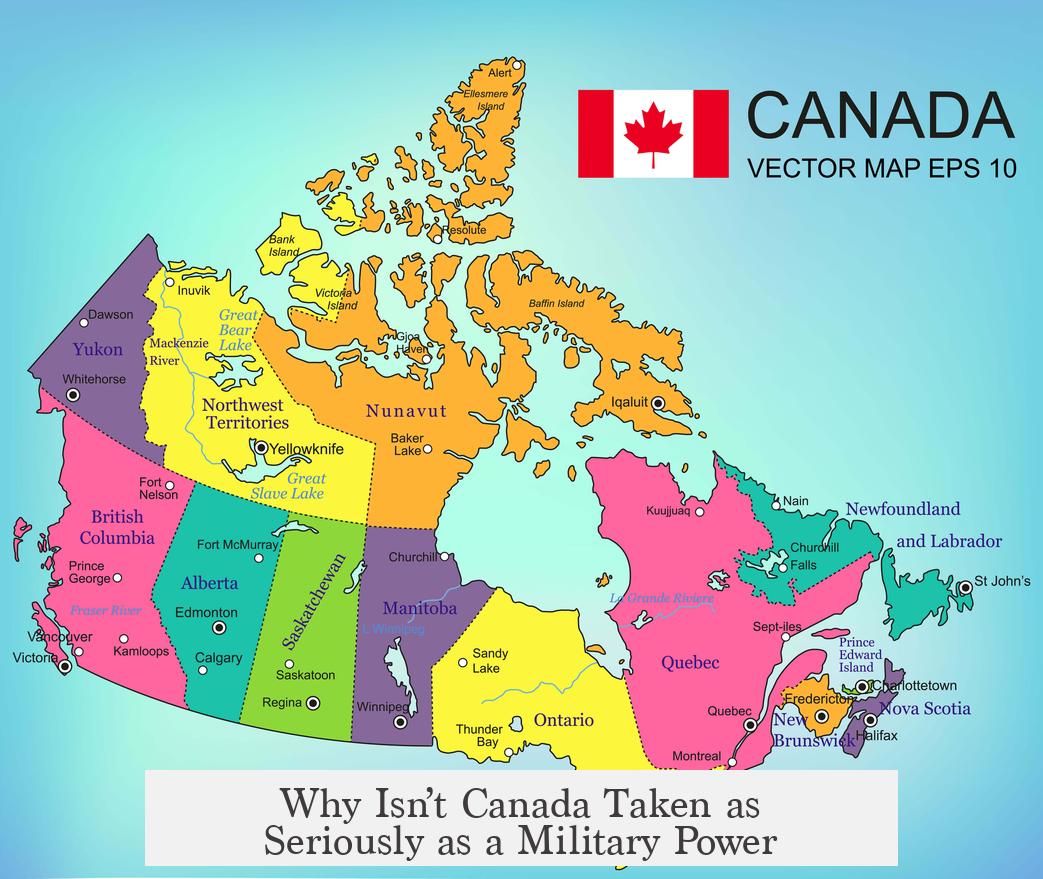
Canada is respected as a military ally but not viewed as a top-tier independent military power because of its small population, specialized rather than generalized forces, limited power projection, political influences on procurement, and sheer overshadowing by its powerhouse neighbor, the USA. Let’s dive deeper into why Canada’s military reputation sits at this unique crossroads.
First off, Canada’s population plays a big role in shaping perceptions. With roughly 35 million people, it’s about a third the size of the UK and a tenth the size of the US. When you compare military power, numbers definitely count. Canada just can’t crank out the same volume of troops or equipment as bigger countries. However, those soldiers they do have? Highly professional and well-regarded.
This is a key point: size matters when it comes to military muscle. Canada’s armed forces are sleek but lean. For example, their Navy currently operates only 12 frigates, 4 submarines, and a dozen coastal defense vessels. To put it in perspective, this small flotilla is a tiny fraction compared to a single large US naval base. Meanwhile, the Royal Canadian Air Force (RCAF) struggles with outdated equipment like aging F-18 jets, making them less potent on the global stage.
Specialized Military: Jack of a Few Trades, Master of None?
Canada isn’t fielding a massive, all-purpose military anymore. Since the World Wars, a lot has changed in warfare. Weapons got pricier, technology got more complex, and Canada shifted from a generalized military to one more specialized within NATO’s framework. This means focusing more on light infantry, special forces tasks, and specific naval roles like anti-submarine warfare.
Yes, Canadian troops stormed the beaches in WWII, but today, the Canadian Army mainly consists of light infantry with a sprinkle of tanks. This kind of force shines in peacekeeping and alliance missions but lacks the muscle to independently project decisive military power half a world away. Their Navy sticks closely to anti-submarine warfare, a critical niche but a narrow one.
The air force’s challenges are even starker. Lack of a domestic combat aircraft maker means they rely heavily on foreign procurement. This opens up plenty of political battles about what planes to buy and when—often ending in delays and hesitations. It’s hard to take a jet squadron seriously when it’s stuck waiting for replacement fighter jets for years.
Politics and Procurement: Where Military Meeting Politics Gets Tricky
Canada’s military procurement process has a reputation for being… complicated. Especially for the Navy, shipbuilding contracts are often awarded for political reasons, focusing on domestic job creation. The result? Intense bursts of shipbuilding every few decades with lengthy pauses in between.
Meanwhile, the Air Force often finds its modernization plans stymied by political wrangling. Without a homegrown combat aircraft industry, decisions depend on international partnerships and fall victim to partisan debates. This slows development and makes Canada less flexible in upgrading its military tech.
The Elephant (or Bear) in the Room: The United States
Canada’s military standing can’t be understood without considering its massive neighbor to the south. Geopolitically, Canada and the U.S. are intertwined economically, militarily, and even in intelligence sharing. Canada often finds itself in the U.S. sphere of influence, which means when big military situations arise, American forces get involved. So Canada’s need to demonstrate standalone military might is less urgent.
This creates the “Overshadowed by Awesome” effect. The U.S. is a global military empire, while Canada is… well, a peaceful country with sprawling forests filled with bears and wolves and polite citizens. This difference in scope means Canada tends to complement rather than compete with U.S. military power.
Canada’s Military Perception and Public Image
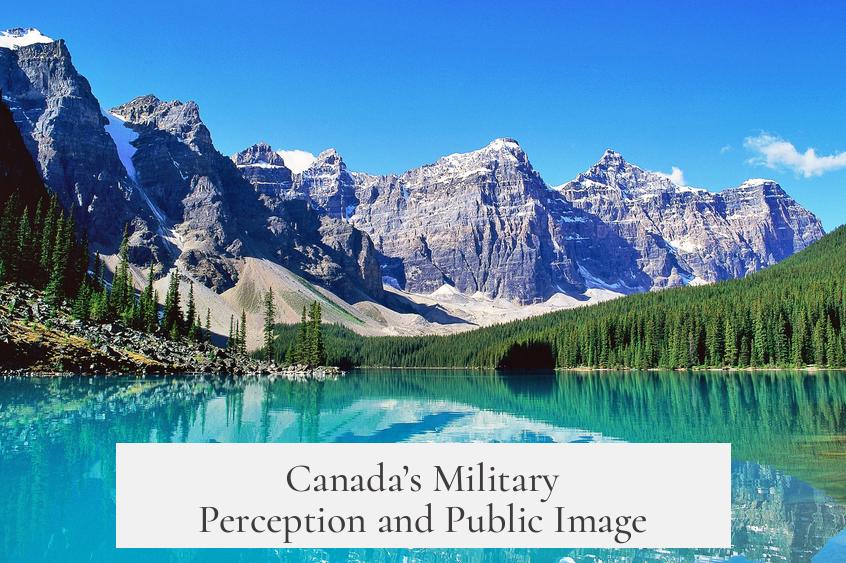
Why does the world often overlook Canada’s military capabilities? Part of it is Canada’s *under-the-radar* approach. Canada doesn’t bombard the public or global opinion with flashy war movies, massive parades, or loud claims of military dominance. Instead, Canadians focus on diplomacy, peacekeeping, and coalition work.
And besides, Canada is famously polite. You don’t expect them to lead aggressive foreign campaigns. Since 1815, they’ve avoided conflict with neighbors, emphasizing peace and alliance over conquest. Their troops? Skilled, brave, and respected by allies. The respect isn’t lacking on the ground or in the field—it’s the political and strategic leadership above that struggles to get serious recognition.
How Canada Could Shift Perceptions
If Canada ever wants to shift perceptions, where should it start? A bigger, better-equipped force is one obvious but expensive route. However, a more realistic approach lies in ramping up specialized assets—perhaps enhancing cyber warfare capabilities or Arctic defense forces, given the geopolitical sensitivities around the Northwest Passage and Arctic sovereignty.
Streamlining procurement and reducing political interference could also help Canada field more reliable and modern forces faster. Investing in cutting-edge tech and deeper NATO integration might further bolster Canada’s trusted role in allied missions.
Final Thoughts: Respect Where It’s Due
Canada may not be a military superpower, and that’s okay. They’ve carved a niche as reliable, specialized contributors with strong ethical standards and solid battlefield effectiveness. Their challenges are rooted in population size, procurement politics, and geographic-political realities dominated by the U.S. and other major militaries.
So next time you wonder why Canada isn’t top of mind when listing major military forces, remember: It’s less about a lack of bravery or skill and more about a small but efficient military working quietly alongside giant allies. Canada’s military story is one of respect, specialization, and a polite nod rather than loud thunder.
